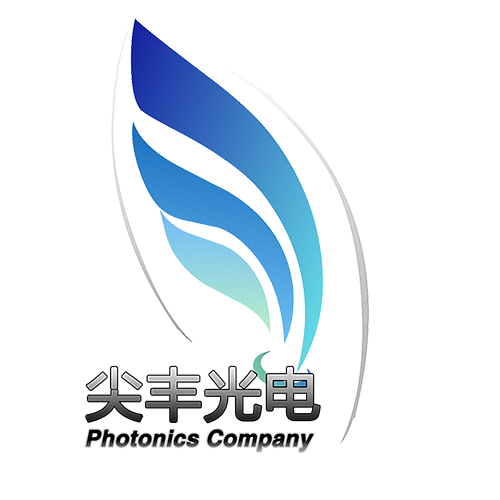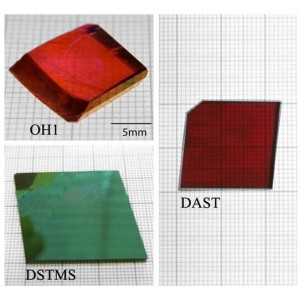
-
 English
English -
 简体中文
简体中文
Categories
- Laser
-
Light source
- Laser diode
- laser Source
- Benchtop ASE Light Source
- SLD model
- SLD light source
- Visible Fiber Lasers
- Erbium Broadband Sources-Dual Band
- Raman Fiber Amplifiers
- Micro Broadband Source
- Benchtop EDFA
- S-band Optical Amplifier (TDFA)
- ASBN-D130/230 deep UV Deuterium Light Source Assembly
- ASB-XE-175 Xenon Fiber Optic Light Source
- ASC Series Spectral Calibration Lamps and Assemblies
- AST/ASTN series wavelength tunable light sources
- ASBN-W High power Tungsten-Halogen Light Source Series
- Picosecond
- ASBN-DW-MINI Miniature hybrid light source
- optical fiber amplifier
- Multi line laser
- Laser detection
- Information optics
- THz
- Fiber compenent
- Laser Crystal
- Laser modulation
- Laser imaging
- Laser Components
- Fiber Fused Biconic Tapering System
- Instrument
- Optics
- 2um Fiber compenent
- Optomechanics
- Lab Consumable
- Optical fiber testing instrument
- agent
Solution
- 光纤激光器的工作原理及其发展前景
- 激光切割异型工作的难点分析
- 光学斩波器及原理
- 空间应用的紫外激光器寿命论证
- wavelength-division-multiplexers
- 拉曼光纤放大器
- Introduction to Fluorescence Filters
- General Introduction to Raman Spectroscopy
- How does a SAM™ work ?
- 激光干涉仪常见故障处理方法
- 盘点光纤传感器四十年发展史
- 空间光调制器简介及其应用
- 什么是空间光调制器
- THz 技术及其应用
- 光学相干断层扫描技术
- Four-Point Probes and Resistivity Testing Equipment
- Infrared Spectroscopy
- AO-OCT Comes into Focus
PRODUCTS
- Thorlabs optoelectronic products agents
- Spectralproducts
- Nethis
- Protemics GmbH
- andover Filters
- Eksma Optics
- EKSPLA
- optical passive components
- Schafter+Kirchhoff
- Electrophysics
- electrooptic IR VIEWERS products
- ALPHALAS DPSS Lasers
- QPhotonics
- Superlum products
- edmund products
- sartorius products
- Tydex Tera Hertz products
- Wasatch Photonics products
- Optromix Company
- About Best Scientific
- Qontrol Systems LLP
- HQ Graphene High Quality 2D Crystals
- iXblue intensity modulators
- Newlight Photonics
Technical document
- Machine Vision
- Optical CoherenceTomography
- Terahertz
- Photoelectric detection technology
- Optical fiber device
- Photodiode Tutorial
- Optical industry and photography industry common English abbreviations
- 高精度纯相位液晶空间光调制器的研究
- 中国计划建造全球最大直径射电望远镜
- spectrometers
- Light source / xenon lamp / mercury lamp light source
- Laser Range Finders
- 激光冷却的原理和技术进展
- Research of the phase-only modulation characterization of a liquid crystal spatial light modulator
- 基于空间光调制器的飞秒激光并行加工技术研究
- Research of Fresnel Incoherent Correlation Digital Holography Based on SLM
- 【Thorlabs教程】氦氖激光器
- OCT Image Gallery
- 光学滤光片的作用原理及应用
- 半导体泵浦与灯泵浦激光器在打标上的对比
- 如何选取激光功率计和能量计
- 液晶空间光调制器的研究
- Thorlabs太赫兹教程
- 【Thorlabs教程】激光扫描显微镜
- Principle of spatial light modulator
- 光隔离器介绍
- Survey on Methods and Systems of Color Holographic Display
- Progress on the terahertz wave radiation properties of Photoconductive Antenna
- 光无源器件(optical passive components)种类及原理
- The main functions of spatial light modulator
Terahertz Crystals

EKSMA OPTICS offers complete portfolio of nonlinear optical crystals: BBO, LBO, KTP, KDP, DKDP, LiIO3, LiNbO3, MgO:LiNbO3, AGS (AgGaS2), AGSe (AgGaSe2), ZGP (ZnGeP2), GaSe, CdSe from stock or manufactured according to customers specifications or for specific application.
Laser crystal product line includes Nd:YAG, Nd:YVO4, Nd:KGW, Nd:YLF, Yb:KGW, Yb:KYW, Yb:YAG, Ti:Sapphire, Dy3+:PbGa2S4 crystals.
Terahertz generation crystals portfolio includes semiconductor ZnTe and GaSe crystals.
Barium Nitrate (Ba(NO3)2) and undoped Potassium Gadolinium Tungstate (KGW) crystals are available for stimulated Raman scattering – Raman wavelength shifting. This section also includes mounting accessories - open ring holders, positioning mounts and crystals ovens with temperature controllers for nonlinear optical crystals.
Semiconductor THz Crystals: ZnTe (Zinc Telluride)crystals with <110> orientation are used for THz generation by optical rectification process. Optical rectification is a difference frequency generation in media with large second order susceptibility. For femtosecond laser pulses which have large bandwidth the frequency components interact with each other and their difference produce bandwidth from 0 to several THz. Detection of the THz pulse occurs via free-space electro-optic detection in another <110> oriented ZnTe crystal. The THz pulse and the visible pulse are propagated collinearly through the ZnTe crystal. The THz pulse induces a birefringence in ZnTe crystal which is read out by a linearly polarized visible pulse. When both the visible pulse and the THz pulse are in the crystal at the same time, the visible polarization will be rotated by the THz pulse. Using a λ/4 waveplate and a beamsplitting polarizer together with a set of balanced photodiodes, it is possible to map THz pulse amplitude by monitoring the visible pulse polarization rotation after the ZnTe crystal at a variety of delay times with respect to the THz pulse. The ability to read out the full electric field, both amplitude and delay, is one of the attractive features of time-domain THz spectroscopy. ZnTe are also used for IR optical components substrates and vacuum deposition.
NOTE: ZnTe crystal contains micro bubbles and they are visible in projection of illuminated crystal. However this does not affect the THz generation. We do not accept complains on presence of bubbles in crystal.
GaSe (Gallium Selenide) crystals used for THz generation shows a large bandwidth of up to 41 THz. GaSe is a negative uniaxial layered semiconductor with a hexagonal structure of 62 m point group and a direct bandgap of 2,2 eV at 300 K. GaSe crystal features high damage threshold, large nonlinear optical coefficient (54 pm/V), suitable transparent range, and low absorption coefficient, which make it an alternative solution for broadband mid infrared electromagnetic waves generation. Due to broadband THz generation and detection using a sub-20 fs laser source, GaSe emitter-detector system performance is considered to achieve comparable or even better results than using thin ZnTe crystals. In order to achieve frequency selective THz wave generation and detection system, GaSe crystals of appropriate thickness should be used.
NOTE: because of material structure it is possible to cleave GaSe crystal along (001) plane only. Another disadvantage is softness and fragility of GaSe.














